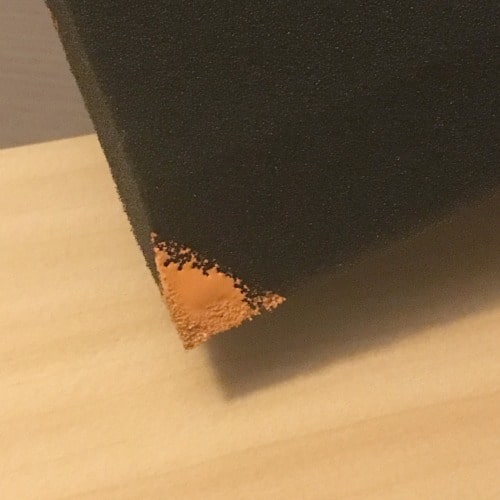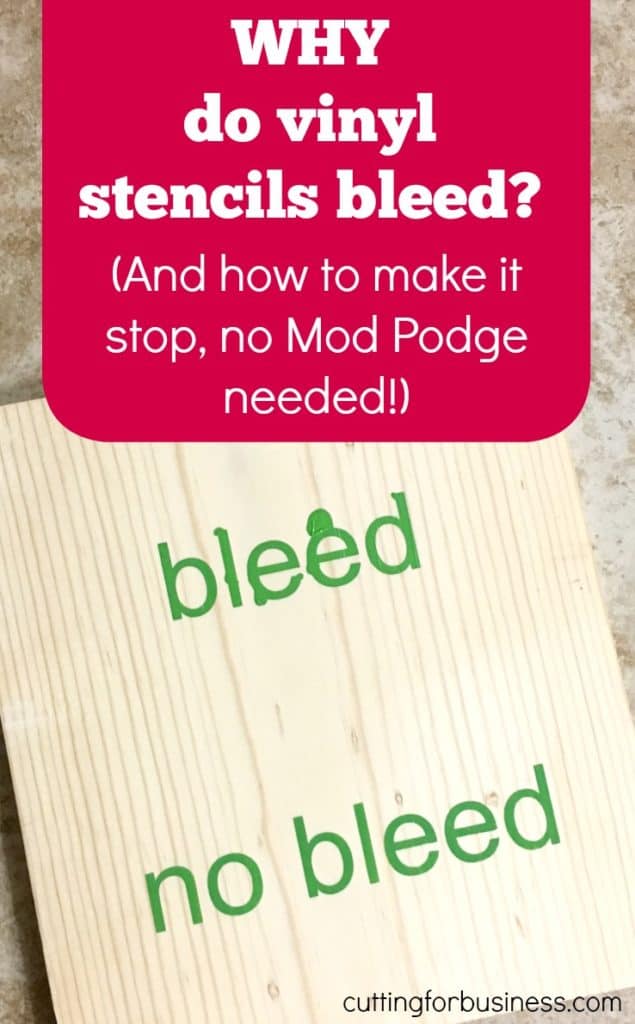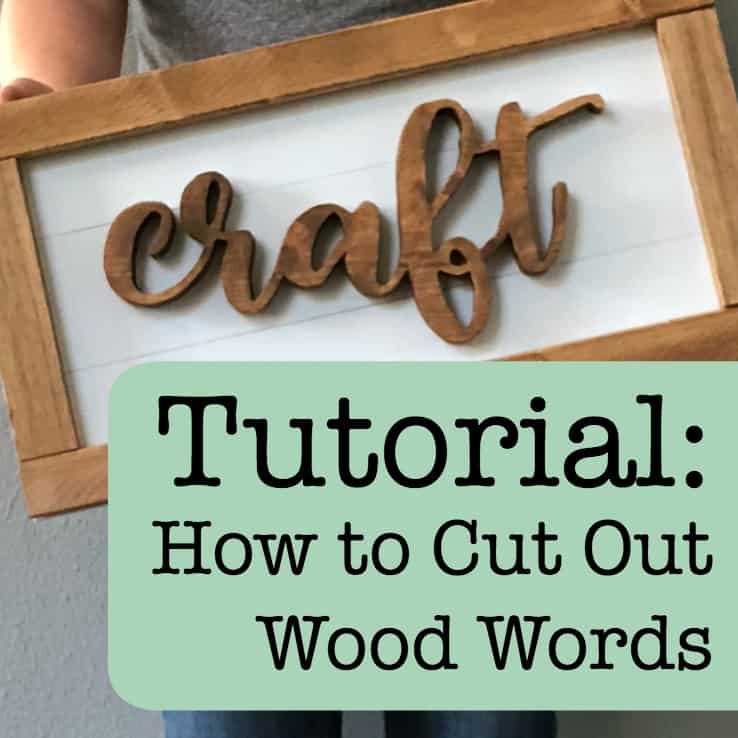Why Does Paint Bleed When Using a Vinyl Stencil?
Affiliate Disclosure: As an Amazon Associate I earn from qualifying purchases. Additionally, I may get commissions for purchases made through other affiliate links in this post.
If you want to sell wooden signs, they need to look nearly perfect because the market is competitive. I often see wooden sign makers struggling to get crisp paint lines when using a vinyl stencil cut on a Silhouette Cameo or Cricut. When they ask for help from fellow crafters, someone always tells them to use Mod Podge. I love Mod Podge, but it is expensive – and unnecessary when making wooden signs.
Why does paint bleed when using a vinyl stencil?
There’s actually a couple of reasons:
- The paint seeps underneath the vinyl stencil because the wood was not sanded well enough. This is probably the biggest problem I see. You should sand your wood with multiple grits of sandpaper, starting with 120 or 150 grit sandpaper and finishing with 220. When the wood is not sanded well enough, the vinyl cannot get a good seal because the surface is uneven (even if you can’t see the uneven spots). Read more about sanding wood in this post.
- The vinyl was not burnished (rubbed) well enough onto the wood. Again, the paint seeps underneath the stencil. Use a squeegee to be sure that the vinyl adheres well to the wood.
- You are using too much paint. I recommend using a foam sponge brush or a makeup sponge and dabbing the paint on in an up and down motion. It is best to only dip the corner of your brush/sponge into the paint and use a tiny amount of paint. Here’s a photo of what my brush looks like when I stencil – I use a tiny amount of paint at once:

Tip: If you try the 3 things above and are still having paint bleed, try this: After placing your vinyl stencil on the wood, paint over it using the same color as you used on the background. This seals the edges the same way that Mod Podge does – for much cheaper.
When I do recommend using Mod Podge
There is one time when I would use Mod Podge: if you are not painting the background of the sign (leaving it natural wood) AND purposely leaving the wooden surface rough. Mod Podge will help keep your paint from bleeding due to the rough surface. See the tutorial for using a stencil on rough wood at this link.
Looking for more tips about buying wood for your Silhouette Cameo or Cricut business? Head to this post. Have a ton of Mod Podge you need to use now? Check out Mod Podge Rocks for lots of craft projects.
Be sure to pin the image below on Pinterest so you can try these tips later:

Since 2015, Christine Schinagl has been helping crafters start and run craft businesses through her blog, Cutting for Business. As a Silhouette and Cricut crafter herself, she has a unique take on what works and what doesn’t work in the craft business world. She also enjoys teaching other crafters how to create digital SVG designs, available through the Design with Me series.





